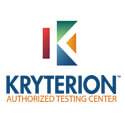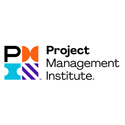Cisco Certified Entry Networking Technician (CCENT)
About CCENT Certification Course
The Cisco Certified Entry Networking Technician or (CCENT) is an industry benchmark qualification certification that validates a professional’s proficiency in data networking processes and technical language used for describing it. To achieve the CCENT certification, you ought to pass ICND1 (the Interconnecting Cisco Network Devices 1) exam.
This course path is established on ICND1 exam’s objectives thus, it is helpful to prepare and pass the ICND1 exam and/or understand the basics of data networking.
If you wish to kick-start a career in data networking or seek to learn advanced facets of data networking, CCENT certification is for you. A valuable IT asset and knowledge, CCENT will assist you in building professional credibility required to demonstrate your proficiency in data networking
Who Should Attend CCENT Certification Course
The Cisco Certified Entry Networking Technician certification is ideal for:
- Entry-level network engineers
- Junior support technicians
- Entry-level telecoms support engineers
Why CCENT Certification
CCENT validates a person’s knowledge needed for entry-level networking and support positions. CCENT is a steppingstone for several successful job functions in networking. CCENT certified people boast of adequate expertise and knowledge to install, troubleshoot and operate branch networking in small enterprises including network security.
CCENT is your gateway to a bright career in the networking domain. Owning a CCENT certification infers that you are capable to manage branch network for small enterprise IT setting. In fact, CCENT is a person’s steppingstone towards CCNA qualification, which will help you stand out from your peers when it comes to entry-level job functions.
After completing this course, you will learn the following:
- IPv6 and IPv4 subnetting and dynamic routing
- Cisco IOS switch and router configuration and operation
- Data encapsulation and TCP/IP and model
- UDP and TCP operation
- Access control and configuration
- Network address configuration
- Accepted worldwide
- Improves professional credibility
Course Objectives
- Understanding Cisco IOS and Networking
- Managing Cisco powered Routers and Switches
- Discovering Troubleshooting and Ethernet Methodologies
- Mastering IPv4 Subnetting and Addressing
- Understanding Cisco IOS Routers
- Implementing Static Routing
- IPv4 Access Control Lists
- IPv4 Private to Public Network Address Translation
- VLANs, Inter-VLAN Routing and Trunking
- Implementing RIPv2 and DHCP
- Implementing Port Security
Course Prerequisites
No formal requisites as such, but Cisco recommend you to have some understanding and knowledge of networking and its protocol.
CCENT Course Benefits
After completing this course, you will learn the following:
- IPv6 and IPv4 subnetting and dynamic routing
- Cisco IOS switch and router configuration and operation
- Data encapsulation and TCP/IP and model
- UDP and TCP operation
- Access control and configuration
- Network address configuration
- Accepted worldwide
- Improves professional credibility
- Global community of Cisco peers





























